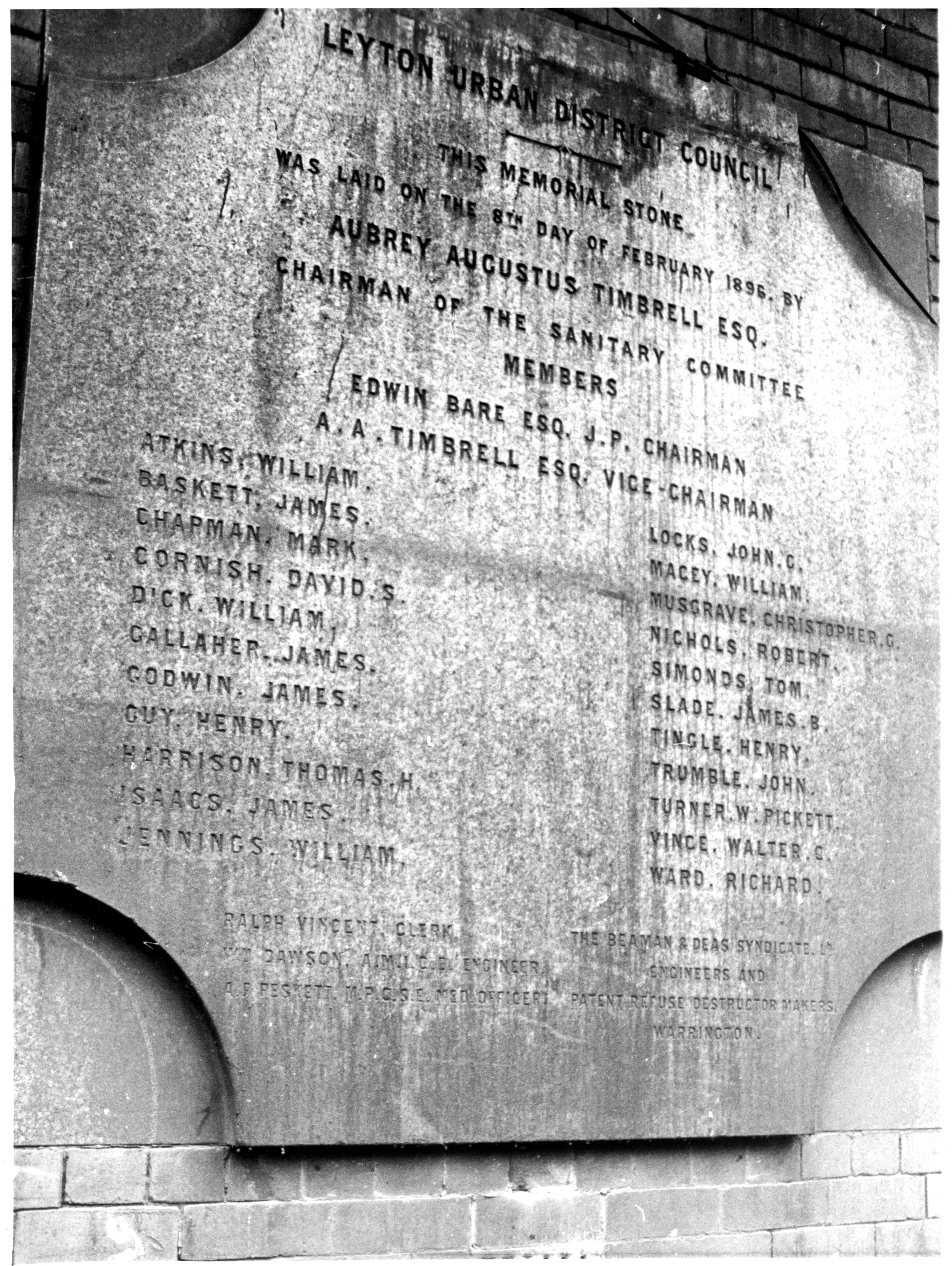8 Draycot Road
LONDON
E11 2NU
Telephone 01-989 2863
Councillor J. E. Brind
Town Hall
Forest Road
Walthamstow
London E17 4JF
28 September 1987
Dear Councillor Brind
Re: Let it stand or let it fall?
I was interested to read the above-mentioned article in the Waltham Forest Guardian for week ending Friday, September 25, 1987. Prior to giving my vote for or against preservation, I would take this opportunity of mentioning, a few points.
I was the Borough Engineer & Surveyor to the old Leyton Corporation from 1958 to 1962, resigning to take up a similar appointment in Islington from which I retired in 1980.
I have continued to take an interest in developments in Waltham Forest. Incidentally, your Council are to be congratulated upon the renovated and improved Central Library in Walthamstow. I await with interest the completion of other works in progress in that part of your authority's area.
It was during my appointment with Leyton that the old refuse destructor works at Auckland Road were reconstructed as a refuse transfer depot, and I was responsible to the Council for the carrying out of the works. Upon completion of the scheme, refuse was conveyed in bulk transporters to South Ockendon in rural Essex. Demolition of the chimney at that time was not practicable as a limited amount of burning of refuse continued and hence the need to retain the chimney. Nevertheless, the chimney was reduced in 'height, the reduction, if I remember rightly, being in the
order of 3 or 4 metres.
I would not have thought the character of the chimney justified it being listed as a building of historic or architectural importance. When I recently visited the site the brickwork appeared in fair condition and, I should say, the bricks would be of some value in the event of demolition. Should the chimney he retained, remedial and pointing works will be necessary, and this will present a heavy recurring cost to the Council.
I feel that your Council should agree to the chimney being wholly demolished. I would further suggest that the memorial stone erected in 1896 be retained and re-located on a suitable site. I put forward two sites for re-locating the plaque namely,
Either. After demolition of the chimney, the area on which it now stands, together with a small adjacent area, be suitably paved, and some of the bricks from the demolished chimney incorporated in the paving. The plaque could then be laid flat within the newly paved area. The area within the vicinity of the chimney is being used for the parking of skips and as a mechanical shovel compound. I would not consider that taking some of this asphalt paved area would cause any problems.
Or. The plaque to be erected on the external wall of the building that is now being used as a weighbridge office and mess room.
I 'trust my remarks will be of some interest and, in the meantime, I await with interest the decision of your Council in this matter.
Yours sincerely,
John T. Lewis


